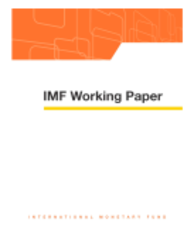
Trade and Industrial Location with Heterogeneous Labor
We show in the context of a new economic geography model that when labor is heterogenous trade liberalization may lead to industrial agglomeration and interregional trade. Labor heterogeneity gives local monopoly power to firms but also introduces variations in the quality of the job match. Matches are likely to be better when there are more firms and workers in the local market, giving rise to an agglomeration force that can offset the forces against trade costs and the erosion of monopoly power. We derive analytically a robust agglomeration equilibrium and illustrate its properties with numerical simulations.
Publication date: June 2004
ISBN: 9781451852721
$15.00
Add to Cart by clicking price of the language and format you'd like to purchase
Available Languages and Formats
| English |
Prices in red indicate formats that are not yet available but are forthcoming.
Topics covered in this book
This title contains information about the following subjects.
Click on a subject if you would like to see other titles with the same subjects.
International - Economics , International - Economics , Agglomeration , matching , spatial mismatch , interregional trade , trade costs , skilled workers , free trade , Models of Trade with Imperfect Competition and Scale Economies , Labor Contracts , Size and Spatial Distributions of Regional Economic Activity , General Equilibr
Also of interest
Summary
Copyright © 2010 - 2026
Powered by:
AIDC



